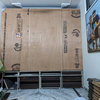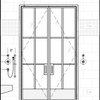Paint FAQ's - XFACTORY.IN

Choosing wall paints for your house can be a very challenging decision. There are many things which you may not generally know before buying wall paints. To help you make an educated decision while purchasing wall paints, here are the most FAQs about paint.
What does curing period mean? Why should one follow this process?
Curing period is the time taken for the paint to dry. It is done so that the paint does not react with the chemical present in the cement.
How long does a painting project take and how long does it last for?
The duration of the painting depends on the number of rooms you plan to paint, and how many painters are working. The Interior walls take approximately 10 to 15 days, and the Exteriors usually take approximately 15 days. Good paints applied with the correct number of coats generally last for 5 to 6 years.
Can the products be applied during the rainy season?
It’s quite risky to paint during the rainy season. If in case, you go ahead with the painting and it rains heavily, not allowing enough time for the paint to dry, you might have to face problems. Hence, we recommend you to observe the weather condition and then go ahead with painting.
How quickly does the paint dry?
Duration of painting depends on the number of rooms you plan to paint and how many painters are working. Paint drying time for Emulsion is 4 hours minimum, though 6 to 8 hours is preferred. Distemper takes 6 to 8 hours, while Enamel, Primer, Lustre and Matt Finish require 8 to 10 hours. Touchwood takes 6 to 8 hours.
How many coats of paint should be applied?
Depending on the condition of the walls and the colour of previous paint, 2 to 3 coats should be applied.
What is the expiry date of the paints?
The general expiry date of the paint is 3 years from the date of manufacture of the Paint. If you have opened the lid of the product, we recommend you use the product within the next 24 hours.
What are the do’s and don’ts to remember while painting?
Do’s:
1) Save on costs; buy paint in the largest pack possible.
2) Stir and strain the paint thoroughly before application.
3) Rectify existing surface problems like cracks/seepage, etc. before the actual painting process.
4) Check the surface for dampness or water seepage.
5) Always clean spilled/splashed paint with a recommended thinner while it is still wet.
Don’ts:
1) Do not use cotton rags for cleaning, use soft synthetic or muslin cloth
2) Do not apply the next coat without the first one drying
3) Do not sandpaper very hard, otherwise, there will be scratches, roughness, and poor gloss.
4) Do not apply very thick coats, otherwise, there will be a thick rough finish, resulting in slow drying.
5) Avoid mixing paints yourself. Buy readymade paints as far as possible, otherwise, there will be patchy and inconsistent columns in the finish.


Comment